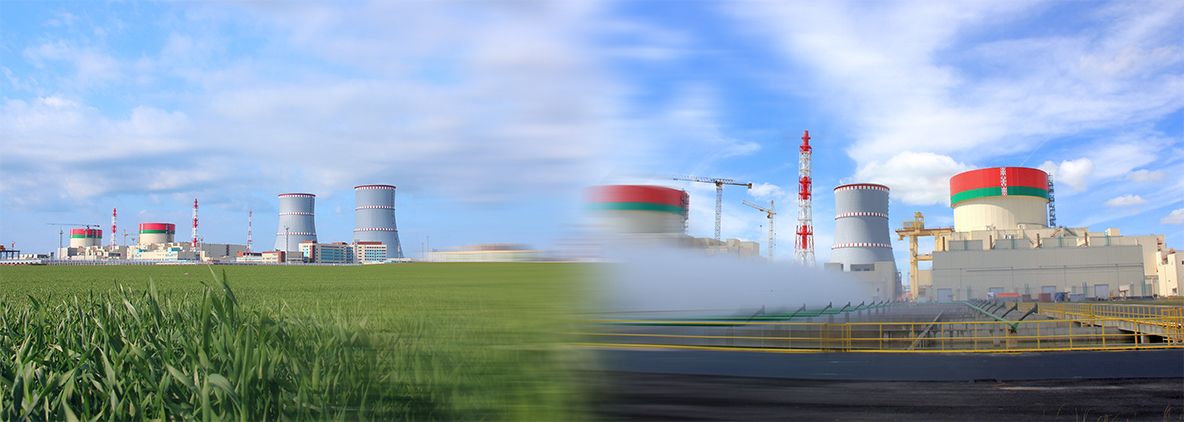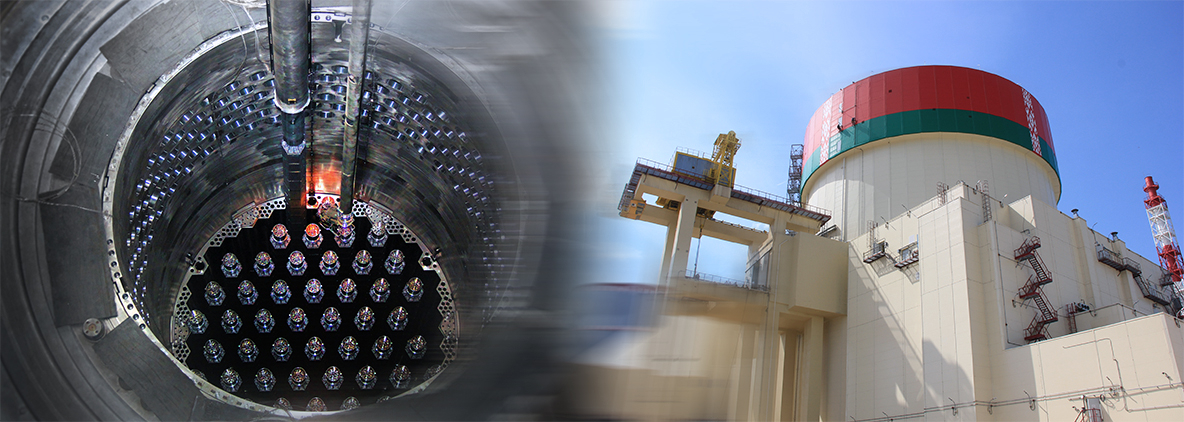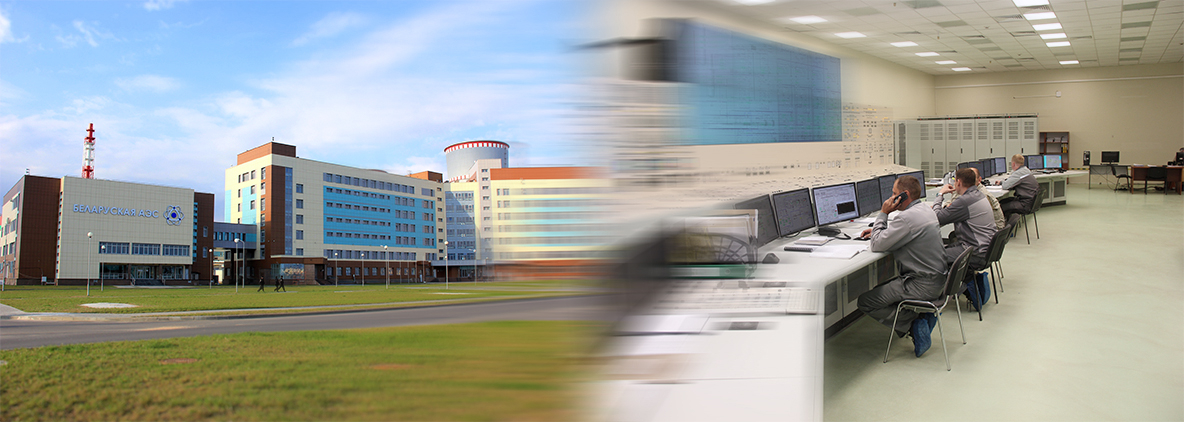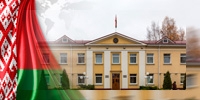
Phones:
Reception: +375 (1591) 4-53-59, fax: +375 (1591) 4-54-00
HR department: +375 (1591) 45-357; +375 (1591) 46-696
Accounts department: +375 (1591) 46-358
Отдел информации и общественных связей
Full license for first power-generating unit of Belarusian nuclear station within week
The Belarusian nuclear power plant intends to get the full license for the first power-generating unit next week, BelTA learned from Anatoly Bondar, Chief Engineer of the enterprise Belarusian Nuclear Power Plant, during a mass media tour to the Ostrovets construction site on 17 April. The tour had been arranged by the Energy Ministry.

The full license authorizes the entire volume of the work before the nuclear power plant is commissioned. “The full license is under consideration. Conditions for the license’s effect are being prepared by the Nuclear and Radiation Safety Department of the Belarusian Emergencies Ministry,” explained the specialist. The work proceeds on schedule. Yet he added that experts of the Nuclear Energy Institute Sosny had had quite many remarks about the design documents. The operating organization and the general designer had done effective work to address the remarks, stressed Anatoly Bondar.
Construction workers started pouring concrete into the foundation of the facilities that will make up the first power-generating unit of the Belarusian nuclear power plant at the Ostrovets site in November 2013. The Belarusian nuclear power plant will boast two power-generating units with the total generating capacity of up to 2,400MW (1,200MW each). The Russian design AES-2006 has been chosen to build the power plant. The design is fully compliant with international standards and IAEA recommendations. The Russian merged company OAO NIAEP – ZAO Atomstroyexport (ASE) is the general designer and the general contractor for building the power plant. The timeline for implementing the project is stipulated by the general contract. The first power-generating unit of the nuclear power plant is scheduled for launch in November 2018.
As of 5 April as much as 5% of the total work required to build the Belarusian nuclear power plant was completed.
Belarusian nuclear station project past 5% progress mark
As much as 5% of the total work needed to build the Belarusian nuclear power plant has been done, BelTA learned from Andrei Barkun, Deputy Director General for Capital Construction of the enterprise Belarusian Nuclear Power Plant, during a mass media tour arranged for Belarusian and foreign reporters as part of the sixth international nuclear industry expo and conference AtomExpo Belarus 2014 on 3 April.
Andrei Barkun confirmed that the time gap between the start of the construction of the first and second power-generating units of the nuclear power plant was only six months instead of 1.5 years. The headway was secured thanks to the earlier start of excavation operations at the construction site of the second power-generating unit. Thanks to this they were able to more effectively use the equipment that was no longer needed after excavation operations were finished at the construction site of the first power-generating unit. According to the Deputy Director General for Capital Construction of the Belarusian Nuclear Power Plant, the fulfillment of the financial plan of the construction project is getting close to 5%. He explained that equipment of the nuclear power plant accounts for a large part of the prime cost of the nuclear power plant. “So far tenders have been held for 70% of the equipment the first and second power-generating units need, contractors have been chosen, contracts have been signed. Parts are now manufactured and some of them require from one to two years to make. The first payments have been transferred to the manufacturers,” said Andrei Barkun.
A core catcher was delivered to the first power-generating unit construction site in late autumn. The installation will begin in May. The executive explained that the core catcher was delivered ahead of the schedule because the supplier had concerns about its inability to make it on time due to late river navigation forecasts for 2014. The bottom part of the core catcher is at the preinstallation site of the first power-generating unit’s construction site.
According to the latest data as many as 2,600 people are employed at the Belarusian nuclear power plant construction site, including about 2,100 Belarusian workers. The other 500 workers are employees of the Russian company Rosspetsenergomontazh. The company employs a lot of Belarusians and specializes in erecting energy industry installations. Two former specialists of the Ignalina nuclear power plant have been hired to work for the Belarusian Nuclear Power Plant. One of them is the head of a turbine division. By the end of the year the number of workers involved in the construction of the Belarusian nuclear power plant is expected to reach 3,400 people. “The volume and the pace of the work will be higher,” said Andrei Barkun. “Work is now in progress at 40 facilities of the nuclear power plant. Work on 15 of them began in Q1 2014. A total of 120 facilities of the Belarusian nuclear power plant will have to be built”.
6th International Conference and Exhibition ATOMEXPO-Belarus 2014
<P align=center><STRONG> Belarus seeks to involve Latvian experts into public survey of BelNPP</STRONG></P>
Belarusian environmentalists would like to engage Latvian NGOs into the public monitoring of the environmental impact of the Belarusians nuclear power plant, Chairman of the Environmental Initiative association Yuri Solovyov said during an online briefing on the website of the BelTA News Agency on 20 December. “At present representatives of Belarus, Russia and Lithuania are involved in the public monitoring project. French and Finnish environmental organizations might join the project as well. Talks are underway to involve Latvian NGOs into the project,” Yuri Solovyov said. He reminded that within the framework of the environmental monitoring project, Belarusian NGOs jointly with the National Center for Radiation Control and Environmental Monitoring of the Ministry of Natural Resources and Environmental Protection of Belarus did measurements of gamma radiation and collected samples of soil, water and air for caesium-137 and strontium-90 around the NPP construction site and several settlements located nearby, including the town of Ostrovets. “The data obtained during the tests will become the basis for an independent monitoring of the impact of the nuclear power plant on the environment. The results of the tests will be used to monitor the changes in the environment near the nuclear power plant after the facility is commissioned,” the environmentalist said. The project to conduct the public monitoring of the Belarusian nuclear power plant’s environmental impact has been carried out upon the initiative of a number of Belarusian ecological organizations with assistance of the general public, scientists, and specialists from Belarus, Lithuania, and Russia. The Russian side was represented by the interregional ecological organization Oka while the Lithuanian side was represented by the Institute for Regional Development and Democracy. The National Center for Radiation Control and Environmental Monitoring of the Ministry of Natural Resources and Environmental Protection of Belarus used the data collected in 2013 to compile a detailed report. The report was made available via the websites of the Ministry of Natural Resources and Environmental Protection and the Nuclear Power Plant Construction Directorate. Results of the monitoring were presented to the general public of Lithuania at a roundtable session in Vilnius on 17 December.
<P align=center> <STRONG>Public BelNPP environment assessment impact survey presented in Vilnius</STRONG></P>
Belarusian ecologists presented the public BelNPP environment assessment impact survey during the roundtable which was jointly conducted by the Belarusian Ecological Initiative NGO and the Institute of Regional Development and Democracy (Lithuania) in Vilnius Yuri Solovyov, the head of the Belarusian Ecological Initiative, told BelTA. The public of Lithuania got acquainted with the results of the monitoring carried out by volunteers of the environmental non-governmental organizations and experts of the national center of radiation control and monitoring at the Ministry of Natural Resources and Environment of Belarus in 2013. Previously, the study report was officially presented in Minsk. The main objective of the project is to create the information databank for regular independent monitoring of the impact of the Belarusian nuclear power plant on the environment at all stages of its life cycle: construction, operation and decommissioning. The participants of the roundtable noted that the results of the survey show that the radiation background and the content of radionuclides in the environment were normal. During the survey the environmentalists did measurements of gamma radiation and collected samples of soil, water and air for caesium-137 and strontium-90 around the NPP construction site and nearby villages of Goza and Trokeniki. In addition, they did laboratory radionuclide analysis of the samples of surface water taken from the Vilia (Neris) River, the main water artery flowing near the nuclear plant construction site. The roundtable was attended by representatives of the Lithuanian government, academia and environmental non-governmental organizations, mass media. “This is the first project to monitor the impact of the Belarusian nuclear power plant on the environment initiated by the Belarusian environmental NGOs, the results of which have been presented to the Lithuanian public," said Yuri Solovyov. He said that next year they are going to involve Lithuanian laboratories and experts to conduct a radiation survey of the environment impact of the nuclear power plant: “The aim is to keep Belarusian and Lithuanian public informed about the safety measures applied during construction and operation of the Belarusian nuclear power plant and Belarus’ implementation of the Espoo Convention.”
The web-site operates error-checking system. If you find a mistake, highlight it and press Ctrl + Enter.



























